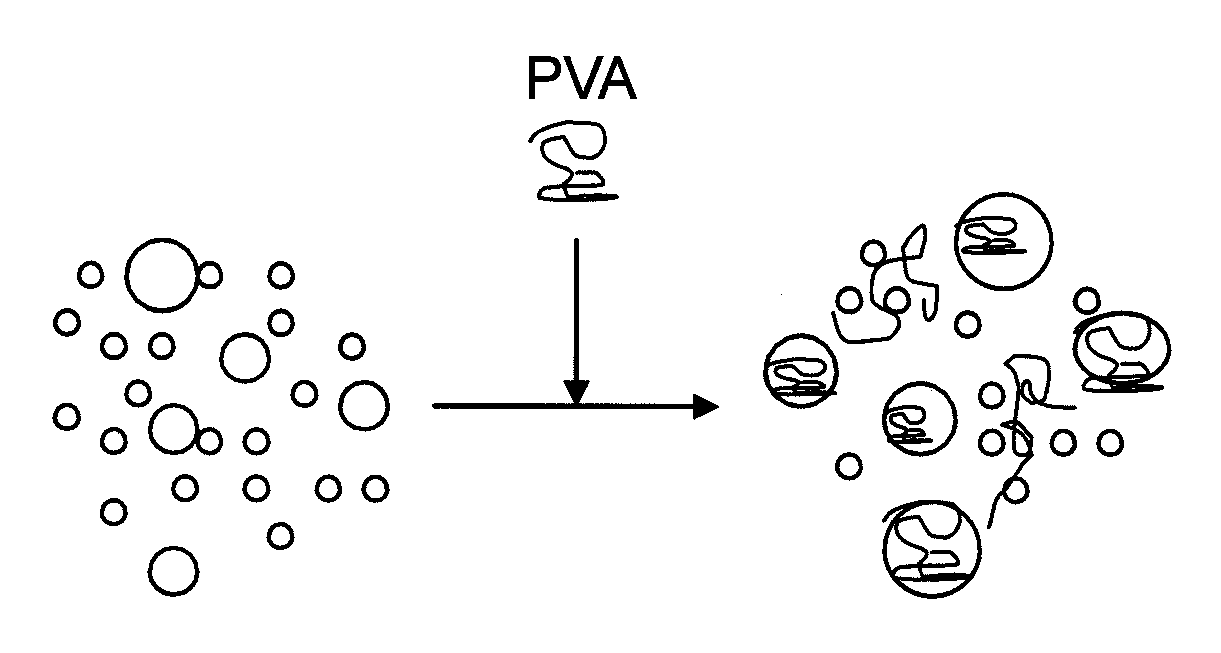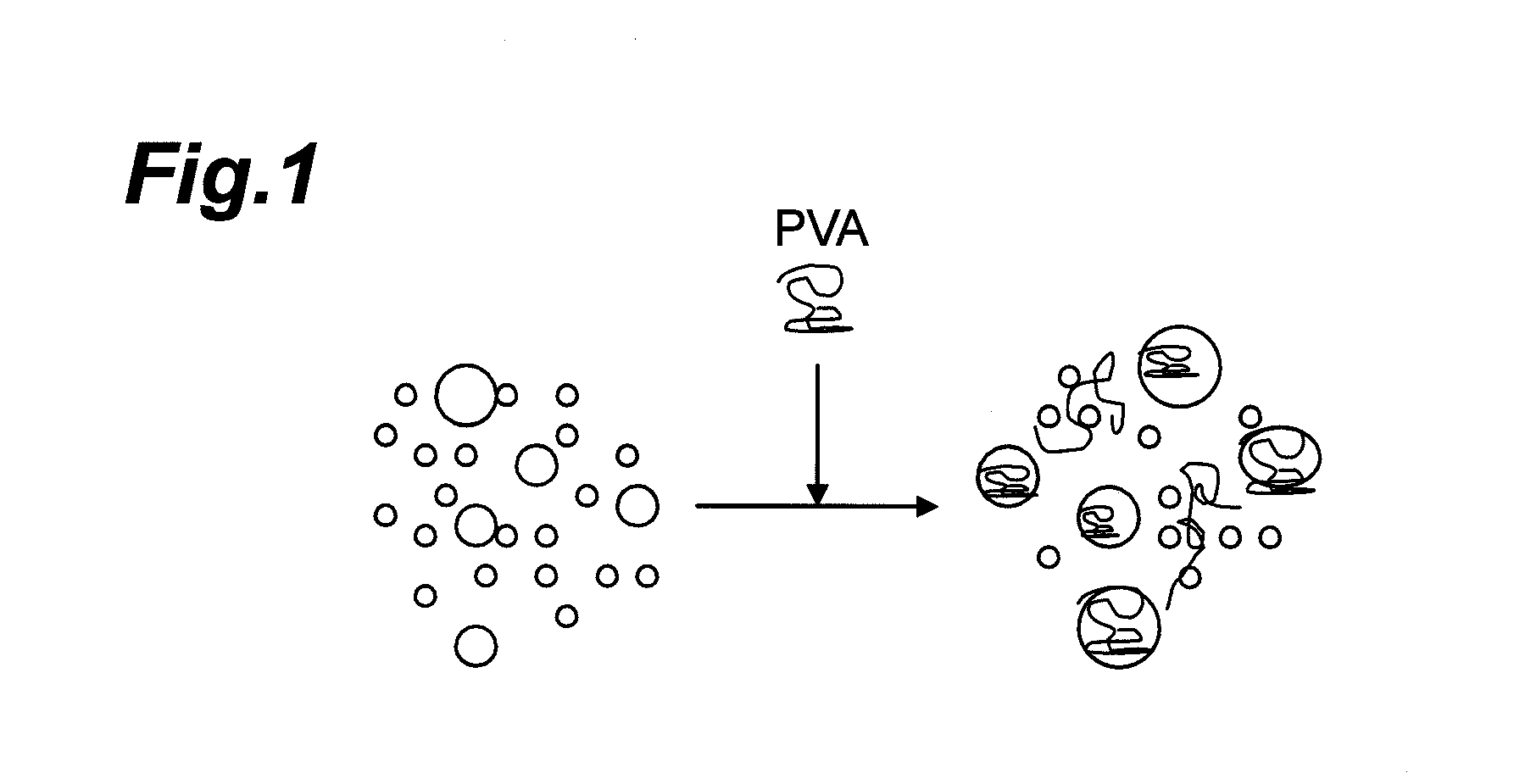Slurry, polishing fluid set, polishing fluid, and substrate polishing method using same
a technology of polishing fluid and polishing method, which is applied in the direction of lapping machines, manufacturing tools, other chemical processes, etc., can solve the problems of reducing the polishing rate, reducing the mechanical effect of the abrasive grains, and becoming more difficult to reduce scratches, etc., to achieve excellent polishing rate, inhibit the reduction of the polishing rate, and excellent polishing rate
- Summary
- Abstract
- Description
- Claims
- Application Information
AI Technical Summary
Benefits of technology
Problems solved by technology
Method used
Image
Examples
example 1
[0117]A 400 g portion of Ce(NH4)2(NO3)6 was dissolved in 7500 g of water to obtain a metal salt aqueous solution. Next, 210 g of ammonia water (25 mol / L aqueous solution) was added to the metal salt aqueous solution at a mixing rate of 30 cc / min, and the mixture was stirred at 200 rpm to obtain a slurry comprising cerium hydroxide particles (abrasive grains). The liquid temperature of the metal salt aqueous solution and ammonia water was 25° C. Next, the slurry was subjected to solid-liquid separation by centrifugal separation to remove the liquid, then fresh water was added and ultrasonic dispersion treatment was conducted. The light transmittance for a wavelength of 500 nm was 61% / cm in the slurry (aqueous dispersion) adjusted to an abrasive grain content of 1.0 mass %. The mean particle size R1 of the secondary particles was 105 nm, as measured by a photon correlation method using the slurry adjusted to an abrasive grain content of 0.2 mass %. The pH of the slurry, as measured us...
example 2
[0121]A 40 g portion of Ce(NH4)2(NO3)6 was dissolved in 1200 g of water to obtain a metal salt aqueous solution. Next, 45 g of ammonia water (12 mol / L aqueous solution) was added to the metal salt aqueous solution at a mixing rate of 20 cc / min, and the mixture was stirred at 200 rpm to obtain a slurry comprising cerium hydroxide particles (abrasive grains). The liquid temperature of the metal salt aqueous solution and ammonia water was 25° C. Next, the slurry was subjected to solid-liquid separation by centrifugal separation to remove the liquid, then fresh water was added and ultrasonic dispersion treatment was conducted. The light transmittance for a wavelength of 500 nm was 91% / cm in the slurry (aqueous dispersion) adjusted to an abrasive grain content of 1.0 mass %. The mean particle size R1 of the secondary particles was 101 nm, as measured by a photon correlation method using the slurry adjusted to an abrasive grain content of 0.2 mass %. The pH of the slurry, as measured usin...
example 3
[0124]A 200 g portion of Ce(NH4)2(NO3)6 was dissolved in 7500 g of water to obtain a metal salt aqueous solution. Next, 220 g of ammonia water (12 mol / L aqueous solution) was added to the metal salt aqueous solution at a mixing rate of 5 cc / min, and the mixture was stirred at 500 rpm to obtain a slurry comprising cerium hydroxide particles (abrasive grains). The liquid temperature of the metal salt aqueous solution and ammonia water was 20° C. Next, the slurry was subjected to solid-liquid separation by centrifugal separation to remove the liquid, then fresh water was added and ultrasonic dispersion treatment was conducted. The light transmittance for a wavelength of 500 nm was 92% / cm in the slurry (aqueous dispersion) adjusted to an abrasive grain content of 1.0 mass %. The mean particle size R1 of the secondary particles was 72 nm, as measured by a photon correlation method using the slurry adjusted to an abrasive grain content of 0.2 mass %. The pH of the slurry, as measured usin...
PUM
| Property | Measurement | Unit |
|---|---|---|
| mean particle size | aaaaa | aaaaa |
| mean particle size | aaaaa | aaaaa |
| length | aaaaa | aaaaa |
Abstract
Description
Claims
Application Information
 Login to View More
Login to View More - R&D
- Intellectual Property
- Life Sciences
- Materials
- Tech Scout
- Unparalleled Data Quality
- Higher Quality Content
- 60% Fewer Hallucinations
Browse by: Latest US Patents, China's latest patents, Technical Efficacy Thesaurus, Application Domain, Technology Topic, Popular Technical Reports.
© 2025 PatSnap. All rights reserved.Legal|Privacy policy|Modern Slavery Act Transparency Statement|Sitemap|About US| Contact US: help@patsnap.com



